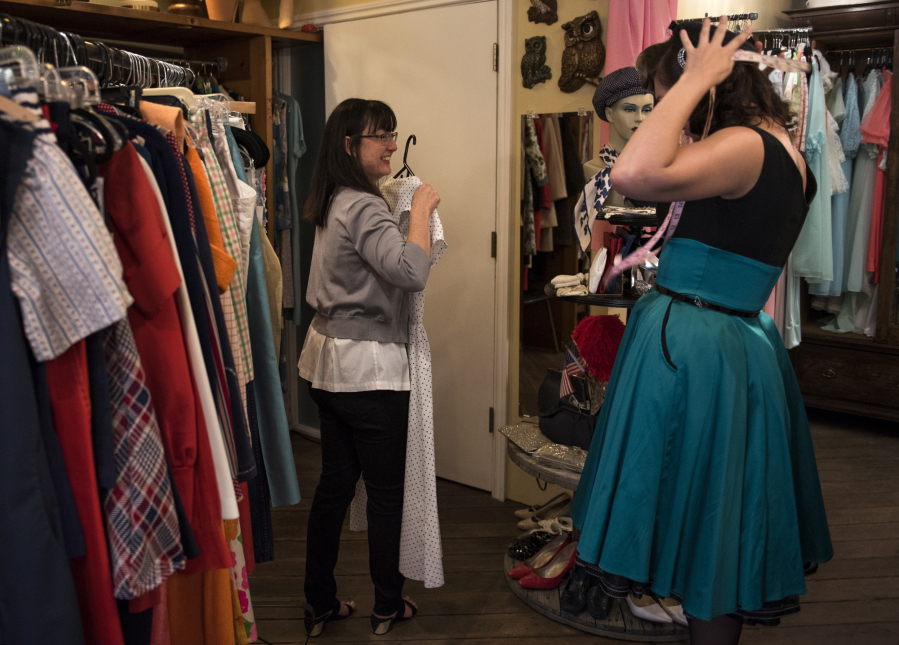One of the biggest shopping days in recent years took place Tuesday: Amazon’s Prime Day sale.
In its three years, millions of online deal-hunters have imbued the day with a holiday shopping spirit not unlike Black Friday or Cyber Monday. The 30-hour spree kicked off Monday night.
Coupled with Prime Day is the arrival last month of Amazon Prime Now to select ZIP codes in Clark County. The service promises two-hour delivery of many kinds of online goods.
“Once you place your order, an employee goes to pick the item and we then get it placed in a bag and ready for delivery,” said Amazon spokeswoman Ana Rigby. “This happens very quickly, sometimes within minutes. Then, an Amazon Flex driver is assigned the delivery.”
While it is yet another prong in the Seattle company’s assault on brick-and-mortar businesses across the country, local businesses said they aren’t too worried as long as they can offer something online retailers can’t: in-person service.
Most everything vs. virtually everything
“It’s just crazy,” said Alisa Tetreault, owner of Most Everything Vintage, a clothing store in downtown Vancouver.
Standing in her 1,200-square-foot shop, she was trying to wrap her head around how Amazon’s latest services could logistically come together. What could the supply chain look like? “I don’t know how they’re making any money,” she said.
Most Everything Vintage is a throwback. The clothing store, at 815 Washington St., does well selling knickerbockers and saucer hats. Everything sold there, even lamps and small furniture, seems cut from the same mid-20th-century cloth.
That uniformity is owed to Tetreault’s strict sense of time. She keeps inventory stocked with items from 30 to 99 years ago, which she says is the definition of vintage. Anything older is antique.
“There is some wish-wash out there. You’ll see something from the ’70s at a store and they’ll say it’s antique,” she said.
By that watch, Most Everything Vintage is still young. The store opened seven years ago, and in that time, the methods of shopping have changed dramatically.
“It’s definitely a challenge, because people are busier and they want the convenience of shopping from home or from their office,” she said.
It’s not a trend she takes personally. Tetreault said she turns to Amazon to buy materials in bulk that she can’t find locally, such as peacock plumes or ostrich feathers for hats.
The business has changed with customers’ expectations, however. The company brought on a tailor in April, hoping to make sure customers leave the shop knowing they will find a fit they can’t guarantee by shopping online.
“The one advantage we have is that vintage is so specific, you really have to try it on,” Tetreault said. “Even though there are websites out there that provide vintage, to feel it, to touch it, makes a big difference.”
‘Old school’
According to estimates from the U.S. Census Bureau, online shopping across the country raked in $105.7 billion in sales for the first quarter of 2017, up 4 percent over fourth quarter 2016.
In Washington, companies whose primary business can be defined as e-commerce or mail order garnered about $2.8 billion in taxable retail sales in 2016, according to the state Department of Revenue. That’s a 12 percent increase over 2015.
Deanne Blevins, owner of boutique clothing store Wild Fern in Uptown Village, said she was aware of the trend when she opened the store a year ago.
“It just kind of confirmed to me that customer experience is more important than it was in the past,” Blevins said. “We’re trying to connect with neighbors, we have good intentions and (want to) provide an experience you can’t get with Amazon.”
Overall, though, retail sales in the U.S. logged around $1.25 trillion, the U.S. Census Bureau said. That puts e-commerce’s share at about 8.4 percent of all retail sales.
Small brick-and-mortar retailers will often find opportunity in selling online, too. Tetreault said some of her specialty items don’t always appeal to the walk-in customer, like a pair of French overalls from the 1950s that she sold for $1,200 online.
“I didn’t have anyone here who would have bought that in person,” she said.
The competition is no less steep online, however. Besides Amazon, apps like thredUP, Vinted and Poshmark have streamlined the secondhand clothes market. PrivCo, a New York-based research firm, found the secondhand market doubled between 2013 and today and now stands close to $2 billion in value.
“(Tetreault is) certainly competing against every Etsy dealer,” said Lee Rafferty, executive director with Vancouver’s Downtown Association. “She’s got a lot of pressure already.”
Tetreault said revenues have risen at the store about 15 percent every year. Much of the success, she said, can be attributed to things in her store that technically aren’t vintage. Most Everything Vintage partnered with local businesses HumbleBug Jewelry, Locksmythe Hair Salon, Vance Family Soy Candles and handbag maker Espiritu Maya to drive sales.
“My wish is for people (here) to embrace the businesses in this community,” she said. “I just think old school. You should shop where you live, you eat where you live. You support your local economy.”




